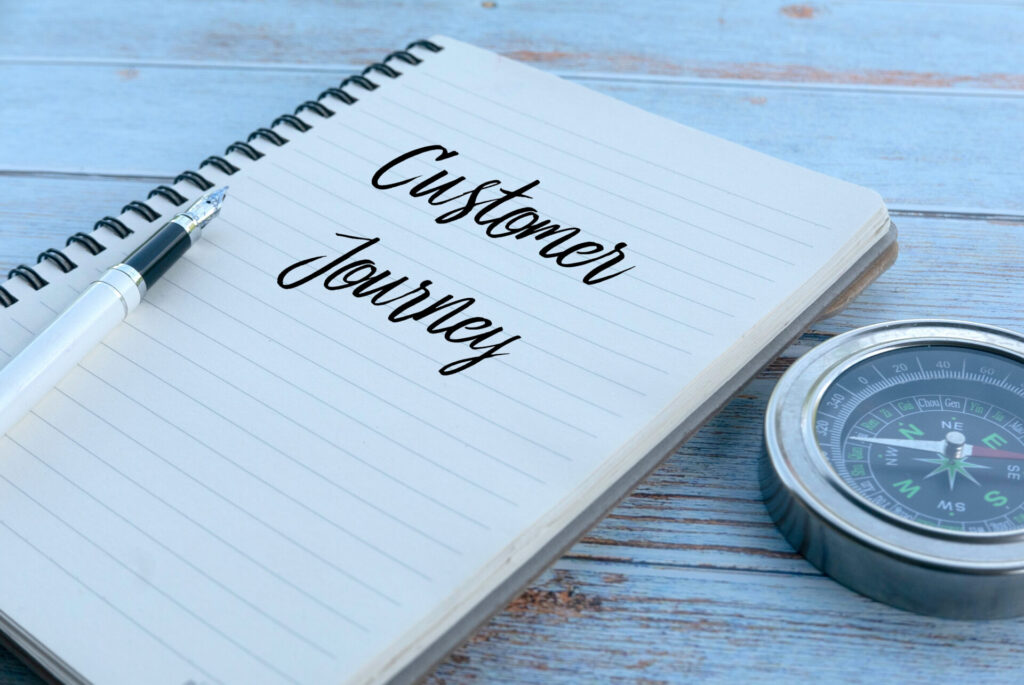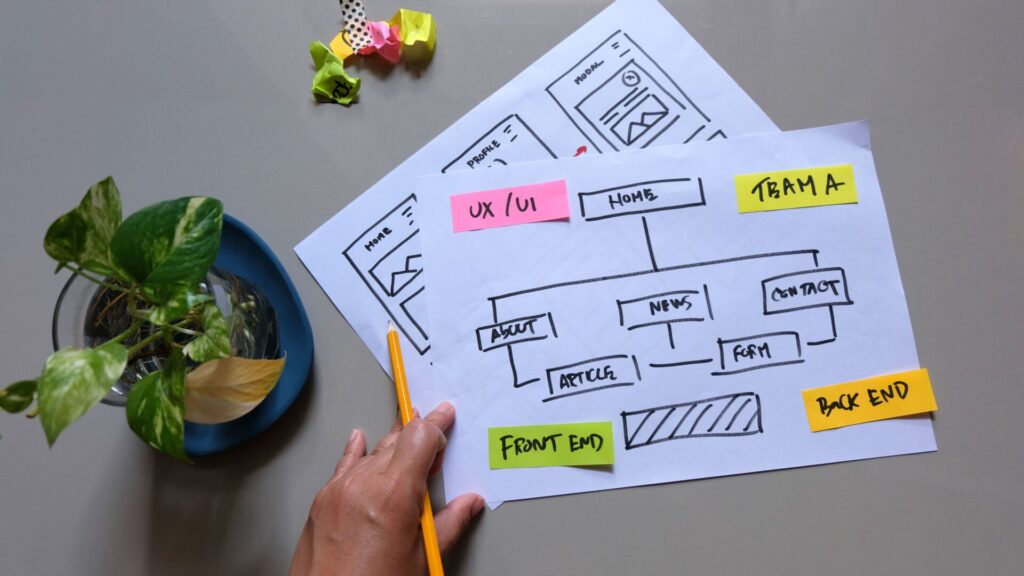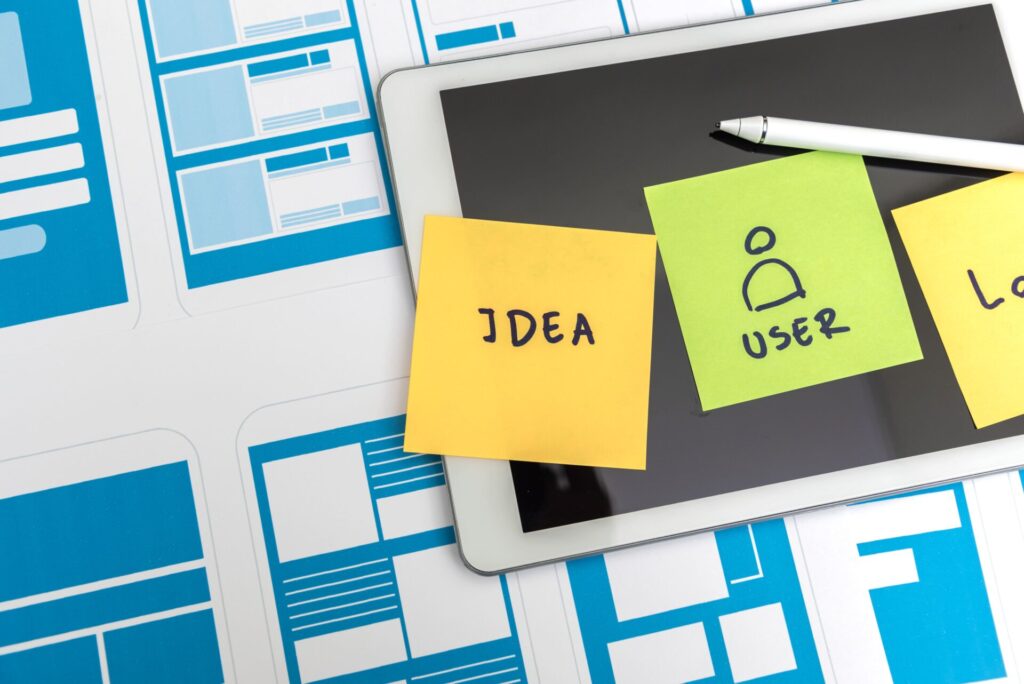User journeys: A comprehensive guide to exceptional user experiences

Have you ever wondered why some products and services are easier to use than others? Or why some customers are more likely to become loyal advocates for a brand? Or what goes on in a user’s mind when they interact with your product or service? It’s like a roller coaster ride, with highs and lows, twists and turns. The answer often lies in user journeys.
Yes, you can understand your users so well that you could design products and services that they love.
What is a user journey and why is it important for businesses?
A user journey is the path users take when using a product or service, covering stages, emotions, and interactions. It helps businesses understand and improve customer experiences. A positive user journey leads to happy customers who return, recommend, and engage. Conversely, a poor journey causes frustration, churn, and a bad reputation. Good user journeys are seamless, intuitive, and meet user expectations, considering their needs and emotions for a positive experience.
Examples of brands improving user experience through user journeys
Here are some brands that have effectively utilized user journeys as a valuable tool to enhance the user experience and, consequently, boost their business performance.
- Google search: Google’s search journey is the essence of a simple and effective user experience. Users enter keywords, and Google’s algorithms quickly provide relevant results. The clean and minimalist design ensures an uncluttered and efficient search journey.
- Apple iPhone setup: Apple has simplified the initial setup of their iPhones to a few easy steps. Users are guided through language selection, Wi-Fi network connection, and restoring from a backup. This streamlined user journey ensures that even first-time iPhone users can get up and running swiftly.
- Airbnb booking process: Airbnb’s booking journey is focused on user convenience. The platform guides users through searching for accommodations, reviewing property details, checking availability, and making secure payments. It offers trust-building elements like host profiles and reviews, ensuring a smooth and trustworthy experience.
- Spotify’s personalized playlists: Spotify uses data-driven user journeys to create personalized playlists for its users. By analyzing listening habits and preferences, Spotify offers playlists like “Discover Weekly” and “Daily Mix.” This keeps users engaged and offers a tailored music experience.
- Netflix recommendations: Netflix’s recommendation journey is a key part of its success. By analyzing user viewing habits and ratings, Netflix suggests movies and TV shows that are likely to be of interest. Users can easily find content they’ll enjoy, enhancing their overall experience.
These examples illustrate how companies have designed user journeys to enhance the overall user experience, making interactions seamless, efficient, and tailored to individual needs. By understanding and improving the user journey, businesses can create products and services that are more user-friendly and satisfying.
Why do I need a design studio to craft a user journey?
Design studio is particularly valuable in crafting a user journey for your product when you face complex, resource-constrained, or time-sensitive projects and when you require an external, expert perspective to enhance your user journeys.
Here are some scenarios when you will need the expertise if a design studio to create a user journey:
- You are developing a new product or service and need help understanding the user experience.
- Your product or service is complex and has multiple touchpoints.
- You are having trouble identifying pain points in the user journey.
- You need help creating a visually appealing and informative user journey map.
- You need help testing and refining your user journey map with users.
How can a design studio help build a user journey?
Creating a user journey is a complicated and demanding process. A design studio can add significant value through their expertise in user experience design, resources and tools, and an objective perspective.
- Expertise: Design studios specialize in UX design and journey mapping, with deep knowledge and experience.
- Objective View: Being external, they provide an objective perspective, identifying user issues and opportunities often missed in-house.
- Efficiency: Design studios work efficiently, with dedicated teams ensuring on-time delivery.
- Comprehensive Approach: They consider all touchpoints and user segments, creating well-rounded user journeys.
- Creativity: Design studios excel in creative solutions for memorable user experiences.
- Quality: They maintain high-quality standards, ensuring error-free and user-friendly journey maps.
- Resource Support: Design studios can supplement your in-house team with additional skills and manpower.
What are user journey maps?
User journey mapping is like creating a map for a maze. It helps you understand how users navigate your product or service, revealing important aspects like dead ends and shortcuts. This visual map covers a user’s journey from awareness to purchase and more, providing insights to enhance the user’s experience. It includes touchpoints like website visits and purchase decisions, aiding in better marketing and product strategies. By streamlining the typical user steps into an ideal journey, it produces a flowchart highlighting each page and decision point.
Some common terms which are misunderstood with user journey maps
User journey map
- A user journey map is a visualization of the steps taken by a user to achieve a goal when interacting with a product or service. It includes the user’s thoughts, feelings, and motivations at each step.
- User journey maps are typically used to understand the overall user experience of a product, identify areas for improvement, and communicate the user experience to stakeholders.
Customer journey map
- A customer journey map is a visualization of the entire customer lifecycle, from brand awareness to purchase to post-purchase. It includes all of the channels and touchpoints that the customer interacts with along the way.
- Customer journey maps are typically used to understand the overall customer experience, identify areas for improvement, and align marketing, sales, and service teams around the customer experience.
User flow
- A user flow is a linear diagram that shows the steps that a user takes to complete a specific task. It does not include the user’s thoughts, feelings, or motivations.
- User flows are typically used to design and test the user experience of specific tasks, such as checking out of an e-commerce website or completing a registration form.
User story map
- A user story map is a prioritization tool that helps teams to understand and organize the work required to deliver a product or service. It consists of a set of user stories, which are brief descriptions of the features that the product or service will need in order to meet the needs of its users.
- User story maps are typically used to plan and prioritize work for agile development projects.
Key components of a user journey map
Every user journey is unique, however the fundamental elements of a journey stay consistent. These key milestones and touchpoints typically include stages like initial discovery, research, decision-making, and final action. While journey maps can be quite detailed and include a lot of information, they should include these key elements:
- Timescale: the journey period, like a week, covering stages from awareness to conversion.
- Scenarios: the context and sequence of events how users accomplish their goal, from recognizing a problem to final actions.
- Touchpoints: what are users’ interactions and actions at each stage.
- Channels: where these actions occur, like on social media.
- Thoughts and Feelings: what the user thinks and feels at every touchpoint.
These are the essential parts of a user journey map.
Crafting user journey maps for optimal experiences
When to craft and who crafts a user journey map?
User journey maps are typically crafted during the design and planning phase of a project. They are a collaborative effort involving designers, researchers, product managers, and sometimes even customers. The map outlines the steps, thoughts, and emotions a user experiences while interacting with a product or service. By visualizing the entire journey, teams can pinpoint areas for improvement, ensure a seamless user experience, and enhance the final product.
How to create a user journey map?
Creating a user journey map involves these key steps:
- Define goals: Clearly state your map’s purpose and the user experience it addresses.
- Research insights: Collect data through customer research methods, such as interviews, surveys, and social media listening. Combine statistical data and real-life experiences.
- Identify touchpoints: List customer touchpoints and channels. Consider adding new ones if necessary.
- Empathy mapping: Understand the customer’s actions, thoughts, feelings, and needs at each touchpoint. Highlight pain points and sources of frustration.
- Sketch the journey: Create a visual representation of the customer’s path through touchpoints and channels. Show their emotions at each stage.
- Refine and Iterate: Improve your sketch, making it the best version of the ideal customer journey.
- Share with stakeholders: Ensure everyone involved understands the map’s value in enhancing the customer experience and driving positive changes.
Common challenges while creating journey maps
The process of creating a user journey map can be challenging, but it’s a valuable tool for improving the user experience.
Here are some common challenges you might come across while creating a journey map:
- Lack of user data: Creating a user journey map requires understanding your users’ needs, goals, and motivations. Without this data, your user journey map will be inaccurate and incomplete.
- Complexity of user journeys: User journeys can be complex and involve multiple touchpoints. It can be difficult to track and map all of the steps in a user journey.
- Bias: It’s important to be objective when creating a user journey map. It’s easy to let your own assumptions and biases influence your map.
- Lack of stakeholder buy-in: this is important for the success of a user journey map because it ensures that everyone is aligned on the goals and objectives of the map.
By understanding the common challenges and how to overcome them, you can create a user journey map that is accurate, complete, and useful.
KPIs to assess user journey effectiveness
After creating the user journey map, it’s vital to measure its impact through relevant key performance indicators (KPIs) connected to the mapped touchpoints and channels. Consider these KPIs to gauge the map’s effectiveness:
- Task completion rate: The percentage of users who complete their desired task.
- Time to completion: The amount of time it takes users to complete their desired task.
- User satisfaction: The level of satisfaction that users have with the user journey.
- Error rate: The percentage of users who make errors while completing their desired task.
- Conversion rate: The percentage of users who convert into paying customers or take other desired actions.
In addition to these quantitative KPIs, it is also important to measure the qualitative impact of the user journey map. This can be done by collecting feedback from users and stakeholders.
How to iterate and improve user journeys over time and how does that help my business?
Iterating and improving user journeys over time is a crucial part of ensuring your product or service meets the evolving needs and expectations of your users. It’s an ongoing process of refinement and optimization. Here are some key steps to make this happen:
- Start simple with user journeys and evolve as you learn more.
- Experiment with new ideas and approaches.
- Collect feedback, identify pain points, and make continuous improvements.
It is important for businesses to constantly iterate user journeys. Here are a few reasons you need to keep improving your user journeys:
- User needs and expectations change over time. As technology advances and new products and services are introduced, users’ needs and expectations change. By constantly iterating on user journeys, your business can ensure that the products and services are meeting the evolving needs of their users.
- You can identify and fix usability problems. User journeys can help businesses to identify usability problems in their products and services. By fixing these problems, businesses can improve the user experience and make it easier for users to achieve their goals.
- You can discover new opportunities for your business. User journeys can help your business to discover new opportunities to improve your products and services. For example, a business might notice that a certain step in the user journey is particularly difficult or time-consuming. By iterating on the user journey, the business can identify ways to make this step easier and faster.
- Your business can stay ahead of the competition. In today’s competitive marketplace, your business needs to be constantly innovating in order to stay ahead of the competition. By constantly iterating on user journeys, your business can improve the products and services and create a better user experience.
Tips for incorporating the insights into the design
- Design features and interactions that align with the user’s needs. Make it easy for them to achieve their goals and avoid their pain points.
- Use the user journey map to visualize the user’s experience and identify areas for improvement. Make sure the design is consistent and easy to navigate across all touchpoints.
- Test the design with users to get feedback. Make changes as needed to ensure that the design is meeting the user’s needs.
A journey map serves as a dynamic reference point, fostering a shared focus on the customer experience among various teams.
What can my business gain from user journeys?
Understanding user experiences can help your business identify areas for improvement, enhancing customer satisfaction, loyalty, and advocacy. User journeys also provide insights into the target market, informing strategic decisions.
User journey maps can provide your business with long-term benefits, such as:
- Identify new opportunities
- Prioritize investments
- Improve marketing and sales
- Reduce customer churn
- Increase customer lifetime value
Embracing advancements
In this era of ever-evolving technology, user journeys go beyond mere clicks; they mirror our dedication to understanding users and showing empathy. We’re venturing into an era where experiences are sculpted with empathy, data-driven precision, and a profound understanding of human behavior.
In the near future, we can expect even more personalization, of seamless transitions between online and offline worlds. Great journeys fit perfectly with users’ goals, making memorable interactions. But this journey never stops; it’s a constant evolution. We need to listen, analyze, and improve these experiences to tap into their potential. By focusing on users, we work together to shape the future of user experiences.
With the AI revolution in almost all aspects of our lives we’re already at the cusp of an exciting journey towards ever-improving user experiences. As technology continues to evolve, our ability to understand and tailor experiences for users becomes more sophisticated. The insights derived from these journeys are invaluable, guiding us towards better, more intuitive design and creating memorable interactions.






